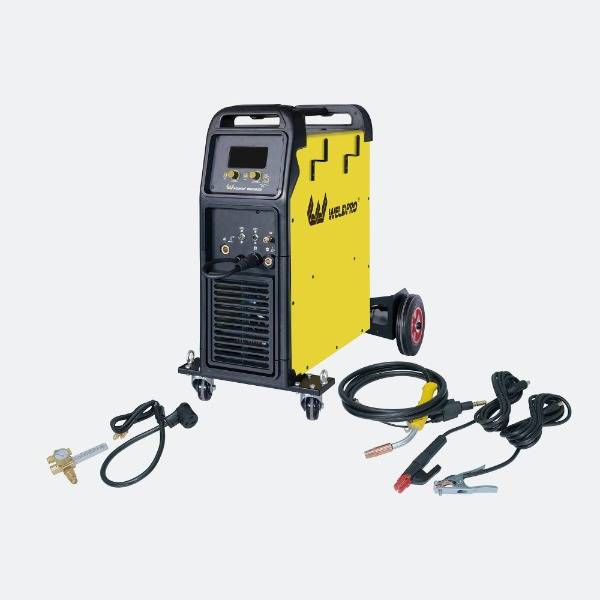 Where To Buy
Where To Buy  Sign In
Sign In-
Cart
Loadding...
With digital controls, welders can precisely set pulse parameters and wire feed rates tailored to the specific material and job
Efficient welding requires not only skill but also equipment that can consistently produce clean results. The IGBT Inverter Digital Double Pulse MIG MAG Welder is designed to reduce spatter significantly, improving weld quality and reducing post-weld cleanup. Paired with the IGBT Inverter Split Wire Feeder Industrial MIG MAG Welder, this setup offers a versatile solution for a wide range of materials, from thin-gauge metals to heavy plates.
How Double Pulse Technology Reduces Spatter
The double pulse technique works by cycling the welding current between high and low pulses, which regulates the heat input and controls the molten metal transfer. This pulsation smooths out the arc, reducing erratic metal droplets that often cause spatter.
As a result, welders experience fewer splatters around the weld bead, resulting to cleaner joints and less time spent grinding or polishing. This is especially beneficial when working with sensitive metals like stainless steel or aluminum, where surface quality is paramount.
By controlling the arc energy, the welder also helps maintain a stable weld pool, improving penetration consistency and bead shape. This allows operators to produce more uniform welds, which is crucial for maintaining structural integrity.
The Role of the Split Wire Feeder in Consistency
The split wire feeder complements the double pulse welder by ensuring a steady and uninterrupted wire feed. Since the feeder is a separate unit, it can maintain consistent tension and speed regardless of cable length or torch position.
This consistency helps prevent common wire feeding problems such as birdnesting, wire jams, or erratic feeding speeds, all of which can contribute to poor weld quality and increased spatter. The design also reduces mechanical strain on the wire, further improving feed reliability.
The feeder’s ergonomic design and flexible cable routing allow operators to work comfortably in confined or awkward spaces without sacrificing wire feed performance.
Applications Across Multiple Industries
The combined technology is suitable for:
Automotive repair and manufacturing, where clean welds improve aesthetics and strength.
Shipbuilding and heavy fabrication, where large metal plates require deep penetration with less spatter.
Food and pharmaceutical equipment, demanding hygienic welds with smooth finishes.
General construction and maintenance, benefiting from quicker cleanup and improved productivity.
Each industry benefits from reduced downtime thanks to less post-weld cleanup and more consistent one-pass weld quality. This can translate into lower operational costs and faster project turnaround.
Operator Benefits and Ease of Use
With digital controls, welders can precisely set pulse parameters and wire feed rates tailored to the specific material and job requirements. The split feeder's ergonomic design reduces torch weight, lowering fatigue during extended work sessions.
Together, these features improve operator comfort and reduce the likelihood of errors, making even complex welding tasks more manageable. The system's preset memory channels also speed up job changes and improve consistency between welders.
Safety is enhanced through built-in overload protections and real-time feedback displays, helping users maintain good welding conditions.
For fabricators and industrial users seeking a reliable, adaptable system, this pairing provides the precision and control necessary for consistent, clean welding results. As manufacturing standards become more demanding, investing in technologies that improve weld quality and efficiency is a practical step toward long-term success.
Subscribe to Our Newsletter!